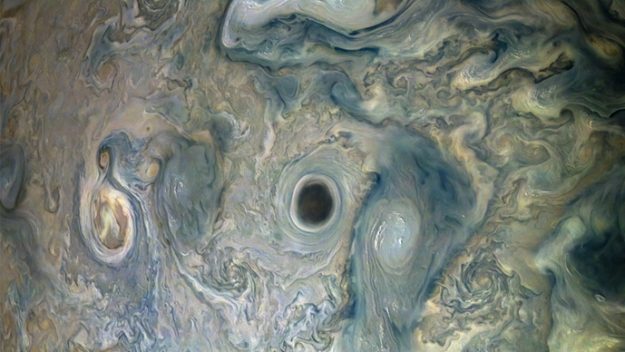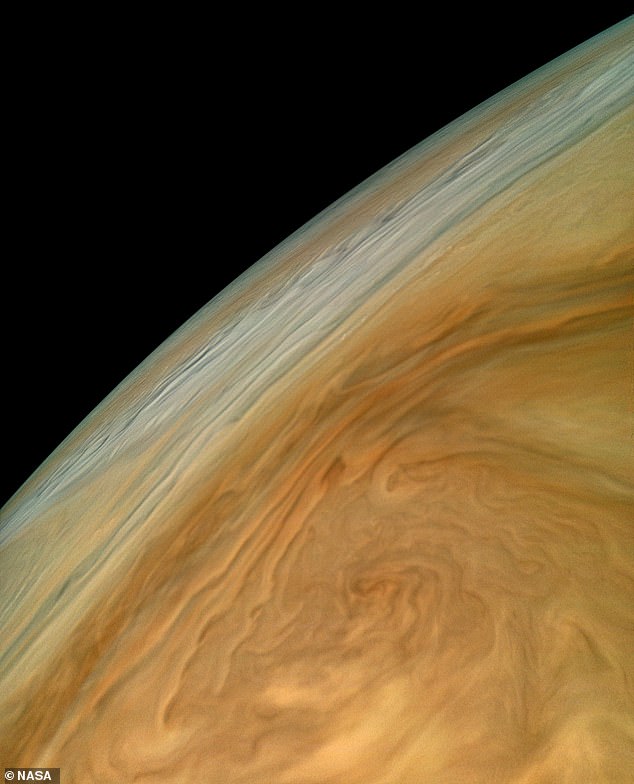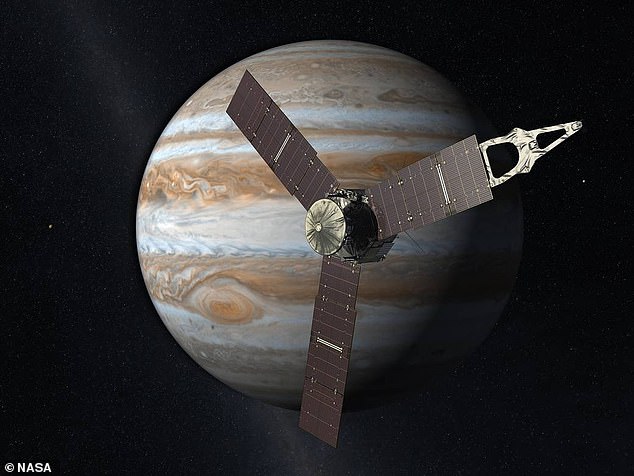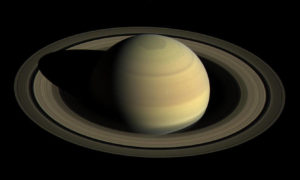NASA spacecraft Juno has captured as an amazing image of Jupiter with the ‘intensely dark vortex’ that can be clearly seen in the image across the surface of the planet. Te Juno aircraft captured the image during the 20th flyby of the planet on 29th May when the spacecraft is 9,200 miles from the planet’s cloud surface.

The spacecraft reached the planet back in June 2016 and continuous to send pictures since then, NASA released the colour-enhanced image of the vortex spinning in a jet stream surrounded by bright, as per the description is given by the NASA. The image was created by Gerald Eichstädt and Seán Doran from Juno’s JunoCam imager and it was named as ‘Jupiter Abyss’.

Juno probe was the closest orbiting aircraft since 2016, however, two spacecraft have been destroyed through the interaction if the planet atmosphere. Juno survived the radiation storm generated by Jupiter’s powerful magnetic field. The spacecraft has reached halfway through the extended mission done by NASA to study the atmosphere of teh Jupiter and deep interior of the solar system’s largest planet.
NASA said “‘Using NASA’s Eyes on the Solar System and simulated data from the Juno flight team you can ride onboard the Juno spacecraft in real-time at any moment during the entire mission,’ Also, Nasa discovered changes in the magnetic file when they compared the latest data with data from older missions from the 1970s. Now you must be thinking ‘What is Nasa’s mission to Jupiter’ Let me give you an overview,

The probe has been initiated by NASA and the spacecraft reached the Jupiter on July 4, 2016, after the timespan of five-year and 1.8 billion-mile journey from Earth. After, it successfully broke the Jupiter’s orbit to within 3,100 miles (5,000 km) of the planet’s swirling cloud tops. Before this, no previous spacecraft has orbited so close to Jupiter. In order to survive the mission, Juno spacecraft survived a circuit-frying radiation storm generated by Jupiter’s powerful magnetic field.
To survive these conditions, the spacecraft has been protected with special radiation-hardened wiring and sensor shielding. The spacecraft is expected to study the composition of the planet’s atmosphere until 2024.
Source: The Geek






















